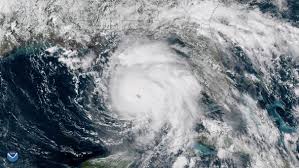
155 mph winds… the headline of The Seattle Times that greeted me this morning. Pictures of devastation from the latest, insane hurricane Michael; tearing trees up by their roots and wrecking homes, businesses, highways and dreams. These images replace the horrific wildfires that tore through the western US this past summer and into the fall wrecking homes, businesses, highways and dreams. The climate is becoming predictably chaotic and we stand humbled at the feet of a force that cannot be reckoned with – a wild darkness of our own making.
How can we come to terms with the daily news? With what we witness out our own windows in our own gardens, homes and treasured wild lands? Can we “fight” climate change? I’m not sure that is our calling. Can we “stop” climate change? Nope. As the stalwart walls of the climate deniers crumble around them like the whipped forests of the Florida Panhandle, they huddle together, pretending that the inevitable isn’t true.
As a writer, I wrestle with how best to serve my time. The morning’s paper scares me – the message so clear and so unnerving that I want to cry – I don’t want to write this article and I don’t know what to do. But I trust something deeper than my own emotional reaction. I trust that there is a way we can remember together, huddle together during the storms of fire, water and wind, and create a legacy for our families, communities and the natural systems we all share and depend on for our lives.
In my novel The Same River, I tell a story of two women in two different times. Each of their lives is strewn with loss, tragedy, love, hope and healing. I used their stories to help us better understand the importance of caring for our place, and for the deep importance of how we can better understand the impact of corporate decisions on our natural living systems. It was my attempt to address these essential issues from outside the “shame and blame” tactics of traditional environmentalism.
My next novel, Current Future, is about climate change. It also takes place in two different times, 30 years into our future, and the way future. Tilia is a very powerful woman living beyond the time when the earth changed into something else. She is named for the Tilia Tree, which was revered by the goddess Freya. I am asking for her help in telling this story. I am trusting the wisdom of my characters to guide me through the science, the chaos, the possibilities of what climate change will mean to us and our future.
Dianne Duminoski in her book The End of the Long Summer says:
“The source of hope lies not in the belief that humans are destined to achieve dominion but rather in the evidence that we are a stormworthy lineage that has managed to flourish on an increasingly volatile Earth. We come from a long line of survivors who were tempered in the crucible of climatic reversals and catastrophic change.”
This is an expansive, inspiring statement. Fiction can help us better remember who we are by tapping into the deeper stories of wisdom, survival, adaptation, inspiration and hope. We bear the DNA of those ancestors who embody our “stormworthiness,” and if we can remember their stories and tap into our capacity to bear witness to the changes, perhaps we can find consensus on what needs to happen to create the kind of change we can’t imagine.
The sky is falling. And it’s really scary. The facts are real and it is important to know them. At the end of the day, what we also have is the power of story. Fiction is one way to help us imagine and remember what it is we as humans know. Teaching through story is an old way, a familiar way and an important vehicle to offer to the hearts and minds of our kind.
Dumanoski, D. (2009) The End of the Long Summer; Why we must remake our civilization to survive on a volatile earth. Random House: New York.
Leave A Comment